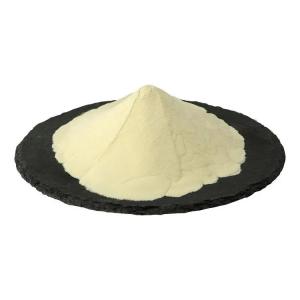Phosphatidyl serine is used in food powders.
Time:2025-08-21Phosphatidylserine (PS) is a phospholipid naturally present in biological membranes, most notably within neural tissues. In the field of functional foods, it is often incorporated into powdered formulations due to its versatility, stability, and compatibility with a wide range of food matrices. Food powders represent a practical and flexible format for delivering phosphatidylserine, as they can be blended into beverages, nutritional mixes, and instant products.
Characteristics of Phosphatidylserine
Phosphatidylserine is composed of glycerol, fatty acids, phosphate, and serine. It is amphiphilic, meaning it has both hydrophilic and lipophilic characteristics, which makes it suitable for dispersing in complex food systems. However, it is also sensitive to oxidation and environmental stress, which makes formulation strategies crucial in food powder applications.
Role in Food Powder Formulations
In powdered products, phosphatidylserine contributes in several ways:
Encapsulation and Stability
PS is often microencapsulated with protective carriers such as maltodextrin, modified starch, or proteins to improve its stability during processing and storage.
Encapsulation also enhances dispersibility in aqueous systems and helps protect the phospholipid from oxidation.
Mixing and Homogeneity
As food powders often contain a blend of carbohydrates, proteins, fats, and micronutrients, PS functions well in uniform blending.
Its surface-active properties can improve compatibility between hydrophobic and hydrophilic components.
Processing Adaptability
PS can be incorporated into food powders through spray-drying, freeze-drying, or agglomeration methods.
These processes allow it to be tailored for use in instant drinks, nutritional supplements, or dry snack powders.
Functional Integration
In powdered form, PS maintains its phospholipid characteristics, allowing it to interact with proteins and starches in rehydrated products.
This property contributes to improved solubility and reconstitution performance in consumer applications.
Application Areas
Phosphatidylserine in food powders can be applied to a variety of categories:
Nutritional Beverage Powders: Protein shakes, milk powders, or fortified drinks.
Instant Food Mixes: Soups, porridges, and ready-to-drink sachets.
Sports Nutrition Powders: Pre-workout or recovery blends.
Functional Snack Powders: Flavored coatings or seasoning powders for snacks.
Formulation Considerations
Source of PS: Commonly derived from soy or sunflower lecithin.
Particle Size and Flowability: Important for ensuring easy handling, packaging, and consumer use.
Storage Conditions: Light, oxygen, and moisture should be controlled to preserve PS integrity.
Regulatory Compliance: Must meet regional food safety standards regarding use levels and labeling.
Conclusion
The use of phosphatidylserine in food powders demonstrates its adaptability as a functional ingredient. With proper encapsulation and formulation techniques, it can be integrated into a wide range of powdered products while retaining stability and dispersibility. As consumer demand for functional and convenient nutrition continues to rise, phosphatidylserine-enriched food powders represent a growing area of innovation in modern food science.


 CN
CN





